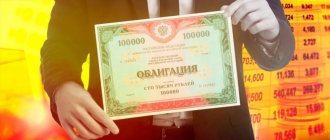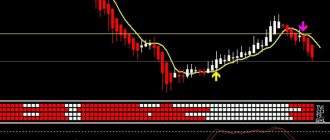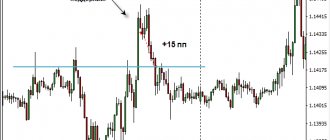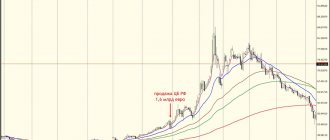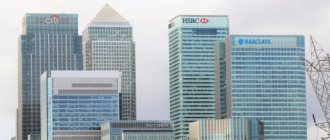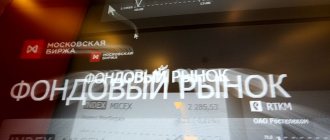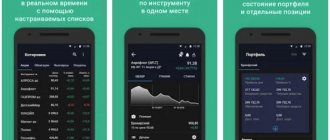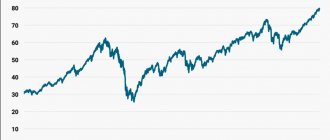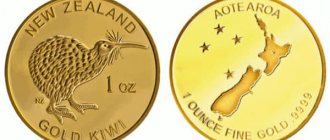Last week, the ruble exchange rate again ended in the red, weakening in both pairs. So, on the evening of Friday, April 2, at trading on the Moscow Exchange, the dollar exchange rate was 76.50 rubles, the euro exchange rate was 89.96 rubles. Thus, in 7 days, the Russian currency paired with the American currency fell by 71 kopecks, and paired with the European currency by 47 kopecks.
Related article: Dollar exchange rate: the situation for the ruble will worsen
Look at the dollar exchange rate online during the day
According to experts, the ruble exchange rate continues to be pressured by uncertainty with new sanctions, which, as they promise in Washington, will be very severe and could be directed against Russia’s national debt. In addition, the dollar itself is actively strengthening, which is facilitated by the increased appetite of global players for defensive assets amid expectations of a recovery in the US economy and new stimulus steps from the Joe Biden administration.
Getting to know RBC Quote
You can access this resource through the RBC website. A distinctive feature of RBC Quote is its focus on an unprepared audience. Most useful materials for beginners are compiled in the form of short abstracts. The topics are varied: comparison of companies using financial multipliers, a general idea of technical analysis, etc. The presentation style is accessible even to a person without economic knowledge. In my opinion, there is not enough system here; it’s not for nothing that the section is called “Tips.” It cannot replace even the simplest brochure on investment.
On the same portal you can not only get acquainted with investment ideas, but also immediately buy securities. VTB acts as a broker. Accordingly, securities traded on the Moscow and St. Petersburg stock exchanges are available for purchase. It is clear that to start investing you will need to open a brokerage account. This can be done, as they say, without leaving the cash register.
Forecasts for the ruble exchange rate
Nikolai Pereslavsky from the CMS Institute believes that one of the factors behind the weakening of the ruble on Friday evening was that global investors decided to get rid of some long positions after the Russian currency rose to weekly highs the day before.
“At the beginning of the new week, risks for a further fall of the ruble against the dollar remain. The nearest reference point for this pair, in our opinion, will be consolidation above 76.00. If we talk about the euro-ruble pair, then there are still risks of testing the level of 90.00 rubles,” he said.
Vitaly Gromadin from BCS World of Investments is negative about the prospects for the ruble exchange rate, according to whom, at the beginning of this week, the “Russian” paired with the “American” may be in the upper limits of the corridor 75.00-77.00.
At the same time, he noted that despite the rise in world prices for “black gold,” this positive factor for the ruble was offset by statements from the American State Department about concern about the escalation of tension in Ukraine. The escalation of the conflict in the east of this country, coupled with the expectation of tougher anti-Russian sanctions, does not allow the ruble to feel calm.
Andrey Kochetkov from Otkritie Broker also noted that the national currency remains in a very difficult situation.
“Oil is now expensive again, but the ruble is neither cold nor hot. The fact is that the increase in yields on US treasury bonds led to the fact that the yield on 10-year securities turned positive. And this negatively affects the perception of risk by global players, and, as you know, the ruble is a risky asset,” the expert explained.
At the same time, Kochetkov, like most of his colleagues, sees the main problem for the ruble in geopolitics. Markets are in anxious anticipation of new sanctions, which are constantly fueled by news about provocations in the area of construction of the Nord Stream 2 gas pipeline and the concentration of Russian armed forces on the border of Ukraine, he recalled.
“Everyone is already pretty tired of the suspended sanctions topic. Therefore, it is possible that we can expect some specifics on this issue just this week. In the meantime, the 75.50-77.00 corridor for the dollar-ruble pair remains the most relevant,” Kochetkov said.
Registration in RBC Quote
This process is extremely simple: you only need a scan of your passport, as well as an INN or SNILS. In the future, to work with your investment portfolio, it will be enough to log into your RBC Quote personal account. As a login, use your phone number. You can top up your deposit for trading by credit card or transfer. The amount of replenishment by card is limited to 100 thousand rubles. per month. There are no restrictions on the amount of replenishment by transfer. Commissions are charged only when topping up using a card from another bank:
- up to 1000 rub. inclusive – 10 rubles;
- from 1000.1 to 10000 rub. – 0.5% of the replenishment amount;
- more than 10,000 rub. – 0.4% of the replenishment amount.
I also recommend reading:
How to open a brokerage account with Tinkoff Investments in three steps
Brokerage account at Tinkoff: what is behind the simplicity?
There are no commissions for VTB clients when depositing/withdrawing funds. When making trade transactions, everyone will have to pay small commissions. 0.3% of the amount is taken from each transaction. If there is at least one transaction per month, the additional fee will be 99 rubles. The high commission is designed more for beginners who do not know that VTB also has tariffs with a commission of 0.06%.
You can follow the news of companies whose shares are included in the portfolio using the “Portfolio” menu item.
US Dollar exchange rate dynamics
U.S. dollar
is the official currency of the United States of America. Bank code is USD. Denoted by $. 1 dollar is equal to 100 cents. The denominations of banknotes in circulation are: 100, 50, 20, 10, 5, 2 (a relatively rare banknote), 1 dollar, as well as coins of 1 dollar, 50, 25, 10, 5 and 1 cent. In addition, there are banknotes in denominations of 500, 1,000, 5,000, 10,000 and 100,000, which were previously used for mutual settlements within the Federal Reserve System, but have been no longer issued since 1945, and since 1969 have been officially withdrawn from circulation because They were replaced by an electronic payment system. The name of the monetary unit, according to the most common version, comes from the medieval thaler coin minted in Germany.
Traditionally, the obverse of the US dollar features images of presidents and political figures of the United States. On modern banknotes these are Benjamin Franklin - 100 dollars, Ulysses Grant - 50, Andrew Jackson - 20, Alexander Hamilton - 10, Abraham Lincoln - 5, Thomas Jefferson - 2 and George Washington - 1 dollar. The reverse side depicts historical monuments: 100 dollars - Independence Hall, where the Declaration of Independence was signed, 50 - the Capitol, 20 - the White House, 10 - the US Treasury, 5 - the Lincoln Memorial in Washington. The $1 bill has a special design on the back consisting of a double-sided image of the so-called Great Seal of the United States, used to authenticate government-issued documents and kept in Washington.
It is believed that to counteract the printing of counterfeit dollars, the design must be changed at least once every 7-10 years. Moreover, absolutely all US banknotes issued since 1861, when money was first issued in paper form, are legal tender in the United States.
The first decision to issue US dollars was made by Congress in 1786, and in 1792 they became the main currency of the state. Since 1796, the principle of a bimetallic monetary unit was introduced, that is, both silver and gold coins were minted. Moreover, each time, as a result of a change in the price ratio of two precious metals, either one or the other coins disappeared from circulation. Until 1857, foreign money (primarily Spanish pesos and later Mexican dollars) also served as legal tender in the United States.
In 1900, the gold standard law was passed. At this point, 1 dollar corresponded to 1.50463 grams of pure gold. In 1933, it was devalued for the first time by 41% as a result of the Great Depression. A troy ounce of gold now costs $35.
At the end of World War II, as a result of the Bretton Woods agreement, the dollar became the only monetary unit exchanged for gold, while the rates of other world currencies were pegged to the American one. At the same time, in the post-war years, the United States became the main creditor of Europe. Thus, the US dollar became the world's currency of account and took its place in the reserves of central banks.
However, by 1960, chronic US budget deficits led to the fact that the number of dollars owned by creditors around the world exceeded the size of the gold reserve. The crisis of 1969-70 complicated the situation. As a result, in 1971, the exchange of dollars for gold was finally stopped after a corresponding statement by President Richard Nixon.
During the 1970s, the dollar depreciated. The situation was aggravated by the crisis of 1975-76. In 1976, as a result of an international agreement, a new one was created - the Jamaican currency system, which finally legitimized the abandonment of gold backing of currencies.
The strengthening of the dollar in the 1980s put American manufacturers at a disadvantage relative to other countries. As a result, it was decided to devalue the dollar by cutting interest rates. And by 1991, it was possible to actually halve the exchange rate against the Japanese yen, pound and German mark.
In 1992, as a result of the fall of the British pound sterling and the crisis in Europe, the dollar rose in price by almost 30%, but from April 1993 its quotes began to decline again - until 1998, when the dollar weakened significantly against the Japanese yen - from 136 to 111 within three days. This was due to the massive repatriation of funds from Japanese investors as a result of the crisis in the markets of developing countries, including the default in Russia.
1999-2001 - a period of renewed strengthening of the US dollar, which was stopped by the Federal Reserve, which lowered interest rates to 2% in order to stimulate the economy.
The most important event for the dollar was the creation in 1999 of the single European currency, into which the central banks of many creditor countries of the United States transferred part of their reserves.
For the summer of 2011, the US dollar is quoted in the range of 1.40-1.46 dollars per euro, 76-78 Japanese yen per dollar and 1.62-64 dollars per pound.
Despite competition with the euro, today the United States currency occupies a leading place in the reserves of central banks. In addition, it remains the main settlement currency between countries in international trade, and is also the base one for payments through payment systems using plastic cards outside the European Union zone, where the euro predominates.
The US dollar is the main currency of the Forex market. Transactions take place through this currency and basic quotes are set.
Experts' opinions regarding the future of the dollar are diametrically opposed. On the one hand, many believe that the collapse of the dollar financial system is inevitable in the near future due to the huge foreign debt of the United States, the largest in the world. As of the summer of 2011, it exceeds $14.5 trillion.
On the other hand, the stability of the dollar is based on high economic indicators. The US economy ranks first in terms of gross domestic product, almost twice as fast as China, which is in second position. In addition, the high dollar exchange rate is facilitated by the monetary policy of the Federal Reserve System, as well as the faith of investors who keep their assets in American currency and during crises seek to transfer them into dollars, finding refuge in US debt instruments from the elements of a market economy.
Information sections of RBC Quote
The “Catalogue” section presents bonds, “blue chips”, leaders of growth and decline in the Russian and American stock markets. Clicking on the name of the company you are interested in allows you to study it in detail, as well as buy or sell its securities.
A simplified quote chart in the absence of technical analysis tools is of no interest. Nevertheless, there is still some useful information here. To get it, you need to click on the blue icon next to the words “About the company.” The following indicators are available: revenue, EBITDA, net profit and capitalization.
The “Growth Potential” section contains average projected values, without indicating the timing of their achievement, as well as current prices to which this growth should be added. The sources of forecasts are not indicated, which reduces their value, because each analyst has his own level of reliability. But you can still find out some details. To do this, click on the name of the desired company from this list. The picture that appears is something like this:
Again, given the wide spread between the dates for which forecasts are given, it will be difficult for even an experienced investor to get an overall picture. As for beginners, sketchy and truncated information can only confuse them.
And finally, the “Feed” section contains news from companies whose securities are presented in the catalogue. The principle of selecting messages is apparently random: only 5–6 publications are published per day for all issuers. There is no systematic analysis, so the reader gets only a general idea of the news background.
I also recommend reading:
How the RAMM copy trading service from the broker AMarkets is developing
RAMM service instead of PAMM: how is the new product doing?
What to expect from exchange rates in 2021: experts made a bold forecast
The other day, the press secretary of the Russian President Dmitry Peskov said that the rise in food prices is not directly related to the ruble exchange rate. However, it is obvious that the well-being of Russians will largely depend on this indicator. talked with the country's leading financial analysts and found out how the exchange rate will behave at the beginning of 2021, and whether it is worth converting your savings into dollars.
Chairman of the Board of Freedom Finance Bank Gennady Salych believes that the euro is now at multi-year peaks against the dollar and, as a result, it is more resistant to the strengthening of the ruble than the American currency.
“In recent days, per unit of euro currency has given up to $1.215, which is quite a rare event: at such levels, the world’s main forex pair was last traded in the winter of 2021 for just a couple of months. As long as the disparity in the monetary policies of the Fed and the ECB remains (the United States is more active in issuing than the eurozone), this trend will grow,” the expert is confident.
In other words, the euro could potentially repeat its hike to $1.25 in December-February, gaining about 3% more in weight, he explained. According to the banker’s calculations, in a scenario of a stable ruble at 74-75 per dollar, the euro currency will remain in the range of 92-93.5 and even touch 94. If another correction begins in the financial markets, which is predicted by all major investment houses without exception, then oil may lose in the next couple of months up to 10%, and the ruble accordingly up to 5%, Salych warned.
Bankiros.ru
“At the peak moments of such a correction, the dollar will be able to reach 76.5, and the euro up to 95. But on average this winter they will tend to the golden mean: 73-74 for the dollar and 90-91 for the euro,” said the interlocutor of Bankiros.ru .
QBF Vice President Maxim Fedorov believes that the first quarter of next year will be associated with the strengthening of the US dollar against major currencies and the currencies of emerging markets. There will be several reasons for this.
“Firstly, the scope for further easing of monetary policy by the US Federal Reserve is now very limited. The regulator may still change the duration of quantitative easing operations, but the volume of the program is unlikely to increase, as the Fed management has repeatedly stated,” Fedorov explained.
And the second reason is that the growth of inflationary trends will not allow the American Central Bank to further soften monetary policy. Also, according to him, we should expect an increase in risks in the global financial system.
“An increase in risks always means a strengthening of the US dollar, which is the funding currency,” Federov clarified.
As for the ruble, according to the expert, it will follow global trends, that is, weaken against the dollar. This will also be influenced by internal factors, primarily inflation, which will exceed the key rate of the Bank of Russia, which always works against the ruble.
“We can expect that in the first quarter of next year the dollar-ruble pair will go above the level of 80,” the expert concluded.
Currencies are outsiders
Fan Analyst TradingView, Inc. Igor Kuchma said in a conversation with Bankiros.ru that the dollar, like the British pound, turned out to be one of the main outsiders among reserve currencies this year.
“In the case of sterling, the fall is due to uncertainty around Brexit, and the dollar has declined due to the easing policy of the US Federal Reserve,” he explained.
As for the behavior of the dollar in 2021, it may fall in value if a new aid package comes from the US authorities.
Alina Bazhulina, branch manager of JSCB FORA-BANK, believes that the ruble will most likely strengthen at the beginning of 2021. The prerequisites for this are rising oil prices.
Bankiros.ru
“Mass vaccination against coronavirus and the absence of new sanctions will play into the hands of the national currency. Placing bonds at attractive rates will attract capital to the country, which will also have a beneficial effect,” Bazhulina is sure.
Financial analyst Evgeny Marchenko suggests that the ruble exchange rate at the beginning of 2021 will remain within the range of 72-73 rubles. And if oil continues its upward trend, the exchange rate may decline to the level of 70-71 ruble/dollar.
“At the same time, one cannot expect such a strong depreciation of the euro. It is likely that the European currency will firmly settle at the level of 87-88 rubles for some time,” concluded Marchenko.
Is it worth converting your savings into dollars?
Marchenko warned that when forming savings for a long-term period, one should not “catch the bottom” and wait for further strengthening of the ruble.
“It is recommended to regularly buy currency for a period of more than 5 years, and a level below 73 rubles is an excellent entry point for the long term,” the analyst said.
When deciding to transfer savings into dollars, you need to ask yourself three main questions - how much money you need to save, for how long and for what purposes, Salych said.
“Now is a good time to sell part of your savings in euros for dollars or rubles with a horizon of six months or more. On the other hand, there are already good levels for buying dollars for rubles,” the expert warned.
The first version of the speculative strategy will allow, according to him, to earn about 3-4% in dollars and 7-8% in rubles due to a future decline in the euro. The second option will help to insure against a future recovery of the dollar above 75. This may be useful if there is a goal to make a purchase with a high import component, for example, a car, electronics, and also if there are plans to make strategic long-term savings - for retirement or to buy a home for border.
